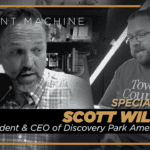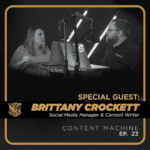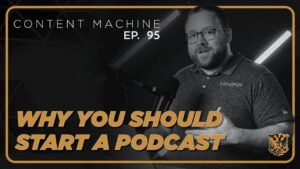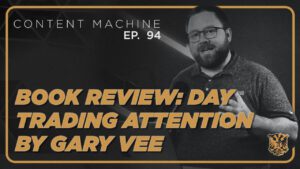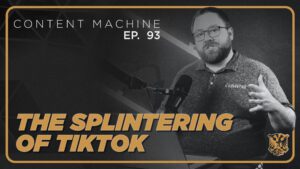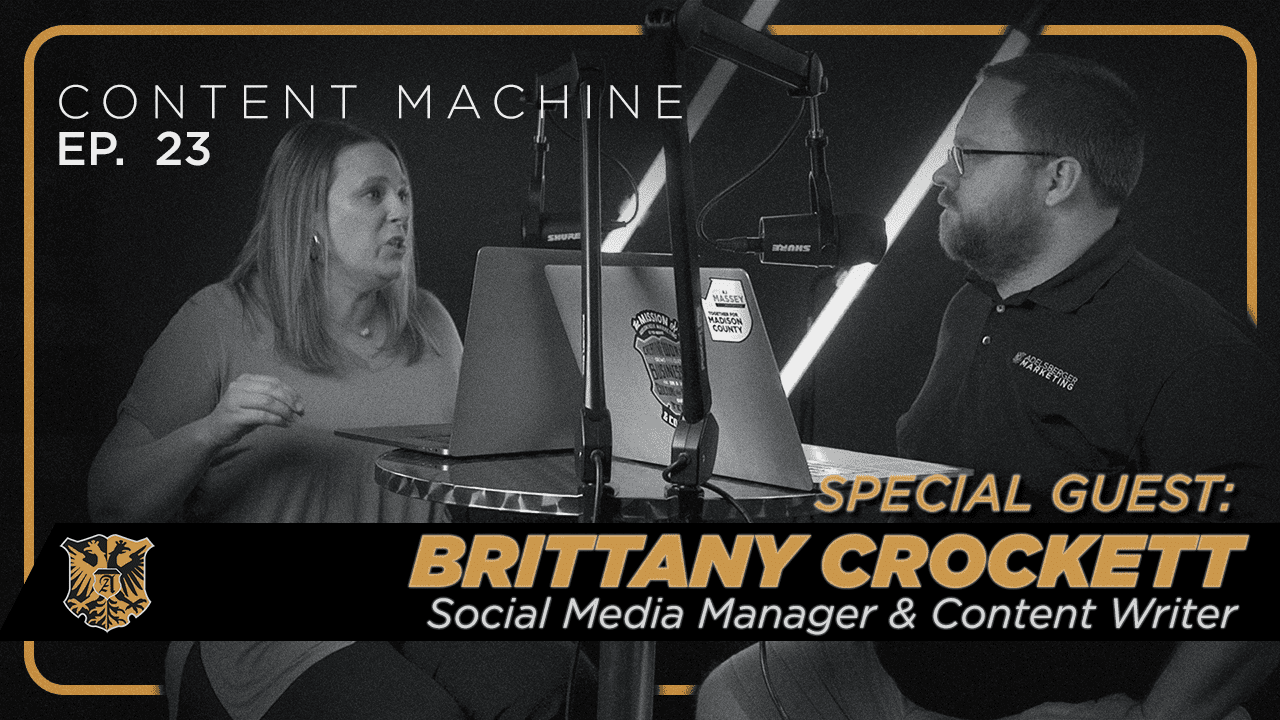
Welcome to the Content Machine Podcast. This week, we are joined by Brittany Crockett, a member of the team at Adelsberger Marketing. She does a lot of our writing, and so we’re going to talk about a few things, trends in the writing space. Brittany, thanks for joining us.
Thanks for having me.
So, why is writing concisely or succinctly, depending on which synonym that you use there, why is that important?
Well, as humans, we tend to scan things. When we’re online, we just go as quickly as we can to find the information we want. The shorter it is, the better. Also with humans that are reading things, the vast majority of people are going to be at about a sixth to an eighth grade level reading. You have to write to that generality. You have to use… Don’t use a $10 word when you have a $1 word that works just fine. The shorter we can get things and the more simple we can get things, the better. Aside from that, before it ever gets to a human’s eye and to their mind, we’re writing to AI at this point because we have to get through the machines, through the SEO for it to ever make it to the person that we want to read what we’re writing. And so, for that AI to read that, it needs to be simple. It needs to be easy to read. And the more complex it is, the harder it is for the machines to read it.
And the easier it is for that machine to read it; the quicker Google is going to be able to see that that’s what people are looking for. So that’s a great point. A lot of people don’t think about… A lot of people think about the customers that are reading things, maybe not the machines that are reading things. Now, a lot of times when we have a website project, which is a lot of the writing that you do, you get tons of information from customers. So how do you turn that into something that’s usable?
Well, most people are writing a topic of their own, and so they have something they decide to write on, and it can be decently easy to keep that on track. With a lot of the things that I’m doing and that we’re doing is we have a lot of information that we’re distilling down. So, one of the things that I’ve learned to do is take all of that information and first thing I do is scan all of it and see what stands out immediately. What are the big points that like, this is interesting. I liked reading this. Somebody else might like it, too. Then I always start with more than I need. If I think I have enough information, I typically go back and say, I think I need a little bit more because you’re not going to use everything that you have. So, I go ahead and have more than I need so that I can cut out the things they might think are important but that aren’t or that I didn’t know were going to be important and needed. And then also, you have to learn to distill information, which is writing and rewriting and rewriting again, taking it down and realizing that when you have this big long paragraph, do you really need all of it? Are these five sentences, can you really say it in two? Usually, I take that and keep going down and down until I can get it as small as possible because it can almost always be said in a much simpler way. You hear less is more, and it really is true with writing because everybody’s busy. You don’t want to make people dig for information. You want to make it so simple that when they got through that website, they say, I wish everything was as easy to find as what I just read. Because when people are coming to a website or a social media page, anything, they’re trying to find something, and you want to make it as easy as possible for people to find that information they’re looking for. You don’t want to make them dig because you’ll lose them.
And you said something earlier about something that they’re wanting to tell versus what people are looking for. And I think that’s an important part to think about is, and you do this all the time for websites, is thinking about who is the person reading the website? Not just what the customer wants to say, what the website wants to say, but what are people actually looking for and then making sure that’s in the writing.
Right. Because sometimes those match up, but sometimes they don’t.
And sometimes we have to argue with clients about that, too. And so now, most people write from their perspective. So, when I’m writing these shows or I’m writing something, I’m writing usually from my own perspective because it’s my name on the door. So, the company’s voice is very similar to my voice. But you write for different companies, different accounts all the time. How do you manage switching that voice in and out?
Yeah. So, every company, person, client that we have is different, and we have a different relationship with each one of those clients. Each of those clients has a different relationship with their client. That’s going to show up in how we write for them and how their voice comes out because some of them are going to be super professional and formal. Some are going to be super casual. Some are going to be focused on being funny. It’s just how it reads. Sometimes there isn’t really even a word for exactly how they want to come across online in a written word, but you think about how you want to write for them as how you would be having a conversation with them in real life. I have to figure out how to translate that into a written format. For me, that involves looking at things that they’ve looked at in the past, so things they’ve liked and disliked, like websites, other social media accounts, and also participating in in person meetings and just hearing how they talk, hearing how they talk to us, hearing how they talk about their customers, and getting feedback early as well, because in those first weeks of a relationship with a client, those first weeks and months, we’re getting feedback on almost everything and making sure that what we’re saying is how they want it to be said. The longer that we have with a relationship with a client, we really learn how they like things said and how they want it to be said, depending on the situation, whether it’s talking about an event or just information or about a story, because even those things within a certain client looks different. We learn and relearn and add on to what we’re starting to say for that client and learn how to say it for them, the more we work with them.
So, if someone’s thinking about building their copy writing skill set or doing some copy writing, and I also think there is a difference between maybe technical writing or informational writing and copy writing, because copy writing is usually headlines and stuff like that, but they cross over. You’re going to end up doing both if you’re doing writing somewhere. Are there any resources that you can recommend for people?
Sure. So, one of the things that we’ve really implemented recently is Smart Brevity by Axios. In this book, it basically talks about the importance of being concise and brief, and it has a layout of how to write things. We’ve implemented some of that, but I think the concepts of it are really great. It’s a really good resource for how to think about writing those headlines and those short attention-grabbing lines. Another book that I know some of us have read was How to Write Copy That Sells. It’s by Ray Edwards. And though it does have a lot of typos in it, the actual information in the book is great. And it does have some good information about writing good informational copy. Another thing that we’ve really used at Adelsberger Marketing in the past few years is Story Brand by Donald Miller. We walk through that with most of our clients. And walking through that with clients, we have to do that internally and not just walk them through it. And by doing that, it helps us think about what story are we trying to tell for them. And so that is a great one to get you thinking about how to say things in a good way.
And a practical thing for me is having the Grammarly extension in Chrome. I’m a pretty good speller and I’m pretty good with grammar, but it keeps me making sure that everything’s done. It makes me think about, am I saying this the best way? Am I writing this in the very best way possible? And sometimes I overrule what it tells me to do, but it makes me question it and decide if I’m making the right decisions. And I think it’s a great thing for anybody, even if you’re not writing day to day, it’s still a great thing to have.
Well, Brittany, thank you so much for sharing your insight. And thank you all for checking out the Content Machine Podcast. Every week we try to provide you an episode that will add value to your business or to your leadership style. And so, subscribe to us. And if this episode is helpful, text it to a friend. Thank you for listening.

